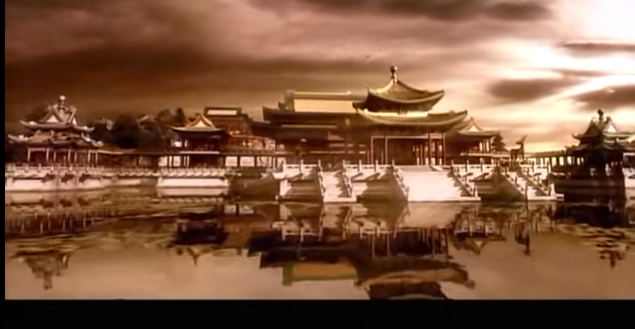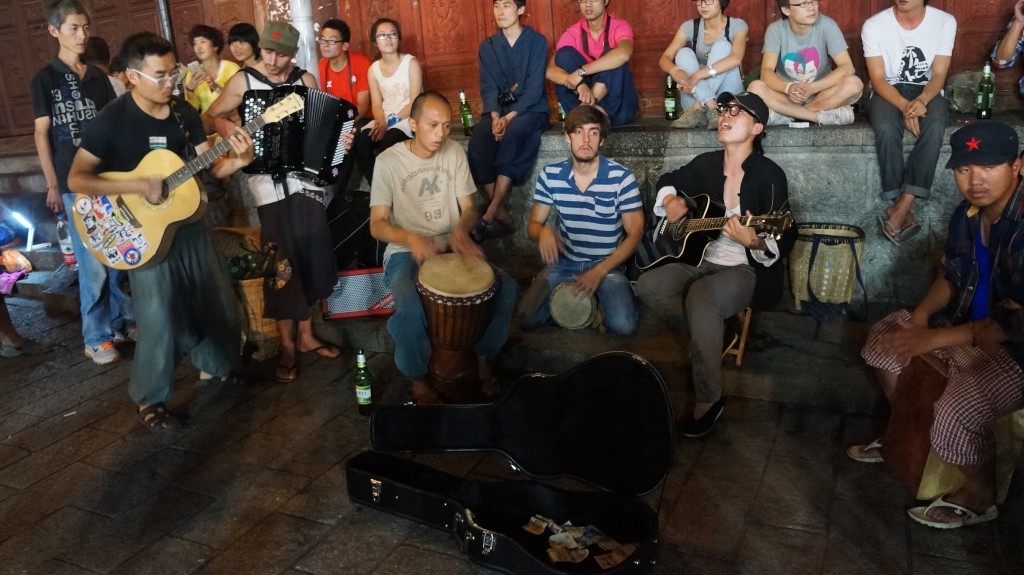In a society obsessed with specialization, Miao Zhe steers a course through multiple disciplines. A writer, translator, and art historian, he is currently the Director of Art and Archaeology Research Center at Zhejiang University, overseeing the new art history program as well as the school’s teaching art museum, the first of its kind in China. Despite these weighty titles, Miao is very approachable – he found time from his busy schedule to accept my last-minute interview request.
Miao gave an insightful and articulate answer to each of my questions. This is perhaps a natural result of his mastery of language and experience in the fields of art history and museum studies. His speech reflects the same kind of logic and clarity found in his writing. He spoke unhurriedly, taking the time to formulate his responses, and articulated his thoughts in a coherent way with very few filler words. During our conversation, which was in Chinese, he would occasionally use an English word to express a concept that has no real equivalent in Chinese.
At a time when every dabbler self-brands as “expert” or “genius”, Miao attributes most of what he has done to curiosity and serendipity. He commented on his transition from one profession to the next saying that “what I am doing today is not really a result of planning… Back in our time,” he continued, “everything was handled by the state, what you studied in school, what job you would be assigned to, so we developed this habit of not planning for ourselves and only moving along depending on occasions.” One thing, however, has remained constant. “I just always like reading, not for any particular purpose, just for the pleasure of reading.”
Although Miao spoke modestly about himself and his works, many of his observations and insights are wonderfully astute and illuminating, and I find myself ruminating on them as I navigate through my art history coursework. For example, he listed some reasons why training in art history can be useful even for people who are not going to pursue it as a scholarly interest. First, it trains your ability to observe things closely; second, it develops your skills in turning non-linguistic observation and visual thinking into language, a difficult task, and one that takes practice.
Asked about the importance of material culture, Miao emphasized that both documents and objects are indispensible to a comprehensive understanding of a civilization. Documents are important, he said, but they record things selectively and often don’t talk about the manufacturing of objects, so unless we study material culture alongside documents, our knowledge of a civilization will be incomplete. At the same time, in order to understand an object becomingly, we need to be able to imagine living in that era and have a common sense of the object’s context, and documents are instrumental in providing this kind of vicarious experience.
While his research focuses on early Chinese art, Miao approaches the discipline of art history as an ardent proponent of multiculturalism. He pointed out that most Chinese museums do not seek to collect objects from outside China, which is “not a healthy phenomenon” and reveals a lack of interest and curiosity in other cultures. Miao believes that there isn’t “a fixed, static Chinese tradition from the beginning of time.” The shapes and characteristics of civilizations, he said, are always changing as a result of contact with other civilizations: “If we want to keep the dynamism, we should keep the tradition of contact and exchange.” In fact, the museum at Zhejiang University, the brainchild of Miao and his colleagues, will be the first in China to have a major collection of objects from a multitude of cultures, and the university’s new art history program will seek to bring in perspectives and methodologies from abroad. Or maybe we should stop constructing a rigid line between Chinese and non-Chinese, between foreign and native, and stop being paranoid about who will dominate the conversation. As Miao pointed out, different methods and opinions resulting from different cultural backgrounds do not entail competition between nations. Research in art history is and should remain a matter of scholarly interest.
Edited Transcript
Via Skype. Tuesday, May 5th, 2015, EDT.
In Chinese. Translation by Ningyi Xi.
Ningyi: I’ve heard a lot of people raving about the art museum under construction in Zhejiang University which will use an entire system of art history pedagogy from western institutions. In the meantime, I feel that, in China, a lot of resurgence of interest in Chinese art and culture involves nationalistic sentiments. I am curious why, under the wave of nationalism in China, Zhejiang University decided to open an art history department and art museum adopting a western model?
Miao Zhe: There are people who have a nationalistic point of view, but there are also advocates of multiculturalism. Different people make different choices. As for Zhejiang University’s program, first, we respect traditional Chinese culture, even more than the nationalists. It’s just our point of view is different. We think that the Chinese tradition is dynamic. There isn’t a fixed, static Chinese tradition from the beginning of time. The shape and characteristics of the tradition are always changing as a result of contact with other civilizations. If we want to keep the dynamism, we should keep the tradition of contact and exchange. We respect traditional Chinese cultures. We are just nationalists.
Ningyi: I also sense some nationalistic sentiments in some media’s coverage of the conference you organized on paintings from Song Dynasty. Some lamented that, out of the twelve presenters, seven work in institutions outside China, and the conversation on paintings of Song Dynasty might one day be dominated by foreigners.
Miao Zhe: If you think of Art history as a subject, it is a German invention. The Chinese have our opinions and methods, but as a modern intellectual discipline, art history started in Germany. Art history as an academic subject first established itself in the West and came to China very late. The first people to use academic methods to study Chinese art were Western scholars. Since paintings from Song Dynasty have a symbolic status in Chinese art history, many concentrate their studies on this period, much like Renaissance in Western art history. Many people do research in this field, including Professor Wen Fong. Their achievement in this field is a result of history. Whereas in China there haven’t been so many studies, and museums do not provide convenient services to scholars, so the status of research is not as advanced. It is a result of history. For sure, the status quo is not ideal, because after all the civilization was produced in China, and Chinese scholars should have stronger expertise. So it is not a question of who dominates the conversation. It is something that Chinese should feel embarrassed about. In China, in the past few years, people started to realize the importance of these paintings, and more people are entering the field.
I think competition between scholars does not involve competition on the national level. It doesn’t matter if you are from the US or from Japan. You are an individual scholar.
Ningyi: So it should all be intellectual debate, not competition between nations?
Miao Zhe: Yes, at least that’s my view and my colleagues. Of course, due to different cultural backgrounds, the methods will be different. But that doesn’t mean there is competition between nations. It’s all up to individual scholars. This is our view. Some people might not think so.
Ningyi: About the method of teaching art using real objects, I feel that it is not just art education is that is lacking direct engagement with objects, but also in subjects like history and other domains.
Miao Zhe: Yes, I think so. When we talk about history and heritage of civilizations, there are two kinds. One is written documents recording activities. The other is objects, the actual products of the activities, cities, architecture, decoration, paintings. In Chinese universities, not so many people are aware that material culture is a big component of civilisation. So when we teach, we teach more with the written documents. Then how do you obtain a comprehensive understanding of the civilization? Without the actual objects, it is hard to do. That’s the major goal of this museum, to make the studies of material culture more comprehensive and more accurate, to fill the missing half. Of course, this approach is relatively new.
Western institutions are better at this. Just look at their textbooks. Art history, needless to say, is all about objects. History, too, is different from our approach.
Ningyi: Yes this I feel a lot. History class in the US is very big on primary sources. In China, it’s always just a summary of events in a few sentences.
Miao Zhe: Right. Documents are important. Without documents, we wouldn’t be able to build a framework for historical narratives. But they are not all, because things are recorded selectively. And most of the time documents do not record the manufacturing of objects.
Ningyi: With the museum there is also a new art history program. Even in the US where there is big emphasis on liberal arts education, enrollment in art history is declining. In China where the education has an even bigger focus on the practicality of things, how do you envision the student body of art history?
Miao Zhe: We are building the art history department for the teaching of art history. The department teaches art history, and the museum is a tool to teach it. As for the recipients of the education, most of the students will be those who are not going to pursue art history as their subject of study. It’s part of the liberal arts education for undergraduate students at Zhejiang University. At the same time, we also need to train future scholars of the field, so we will recruit art history majors as well. Probably not that many, perhaps a dozen a year. Many courses will be intro-level courses for those who will go on to be engineers, doctors, bankers, to offer them a liberal arts education. Practicality is not our concern here. We don’t expect too many people to choose art history as a major. There aren’t many jobs for art history majors.
Ningyi: (laugh) My art history professor always says that art history is a useful major. (laugh) The skills can be applied anywhere.
Miao Zhe: The training is useful for sure. But there is a job market out there, and we don’t know how you will do with a degree in art history in the market. It trains your ability to observe, because you need to observe things closely. And second, it develops your ability of thinking. What does that mean? If you study philosophy, you will know that objects are non-linguistic. To turn your observation into language is difficult. To process written documents is less work, because words already contain thoughts. To translate your reaction to words into words is not that difficult. But to turn your observation and visual thinking into language is difficult, because it involves a shift, a jump between different cognitive systems. So art history is good training on your observation skills and your ability to express non-linguistic things that are difficult to convey. As for the job market, who knows.
Ningyi: (laugh) Right. Are there museums in China that you think are doing well? How do museums in China compare to those outside China?
Miao Zhe: Most museums in China are more or less similar. Some are better than others. The biggest characteristic is that they only have objects of Chinese civilization, from the Palace Museum to Shanghai Museum to smaller local museums. That is not good. If you go to Japan, you will see that Japanese museums are so much more multicultural. The Palace Museum is starting to collect non-Chinese Asian art. But in general, in mainland China, from museums to collectors, no one is really interested in non-Chinese art. That’s not a healthy phenomenon, and it also shows that the mentality in China has a few problems.
If we are not talking about the scope and interest of the collection, Shanghai Museum does a good job. They are more professional at administration and exhibition.
Chinese museums have two shortcomings, one is that their interest is solely on China. Second, there is not much research behind exhibitions. They organize exhibitions according to occasions, but they don’t dig deep into the collection or update scholarly research.
Ningyi: The problematic mentality you are talking about, is it the kind of nativist and isolationist mentality?
Miao Zhe: Yes, but it’s different from the total isolation in Qing Dynasty. Now they are interested in foreign business and commerce, but not so much in learning about other cultures. There isn’t much curiosity in other cultures.
We’re actually the first museum in China to collect objects of a multitude of cultures.
Ningyi: Richard Barnhart said that when he saw Song paintings the first time he decided to go into the field, were there any artworks that touched you so deeply?
Miao Zhe: No (laugh). My interest in art history is more from a historical perspective, not aesthetic.
Ningyi: Do you still start with documents when you do research?
Miao Zhe: Not start with documents. We’re dealing with objects after all. But I always think that, in order to understand an object produced in a specific period of time, to understand it becomingly, you need to be able to imagine the time period, as if you lived then. And then you can develop an accurate understanding of the objects in order to analyze or critique it. How do we imagine the time period as if we lived then? Apart from looking at objects to get the feeling, you also need to rely on the written documents and the activities they describe and understand them really thoroughly. Then you will know what is possible, what is impossible back then, and develop a common sense of the era. Only documents can enable you to get a sense of that, because they record how people felt back then, how they thought, how they reacted to the surroundings. If you can get a grasp of that knowledge, you are no longer an outsider to the artwork and its world. You will understand it as if you lived in the era.
That’s where the significance of documents lies. They don’t necessarily have any direct links to the objects we are talking about. There are very few of those, especially in early period.
Ningyi: I read your other interview where you said that you ended up doing many things by accident. Was there anything that you planned? Or anything planned for the future?
Miao Zhe: A lot planned for the future. The past was a completely different time from now. You guys have so much more freedom. You can plan for the future. Back in our time, everything was handled by the state, what you studied in school, what job you would be assigned to. So we developed this habit of not planning for ourselves, and only move along depending on occasions (laugh). It’s very different from today. So what I am doing today is not really a result of planning. I just always like reading, not for any particular purpose, just for the pleasure of reading. I do have some plans for the future, to build the museum, start the art history department, develop the library, and I have some research projects. Many things depend on opportunities.




